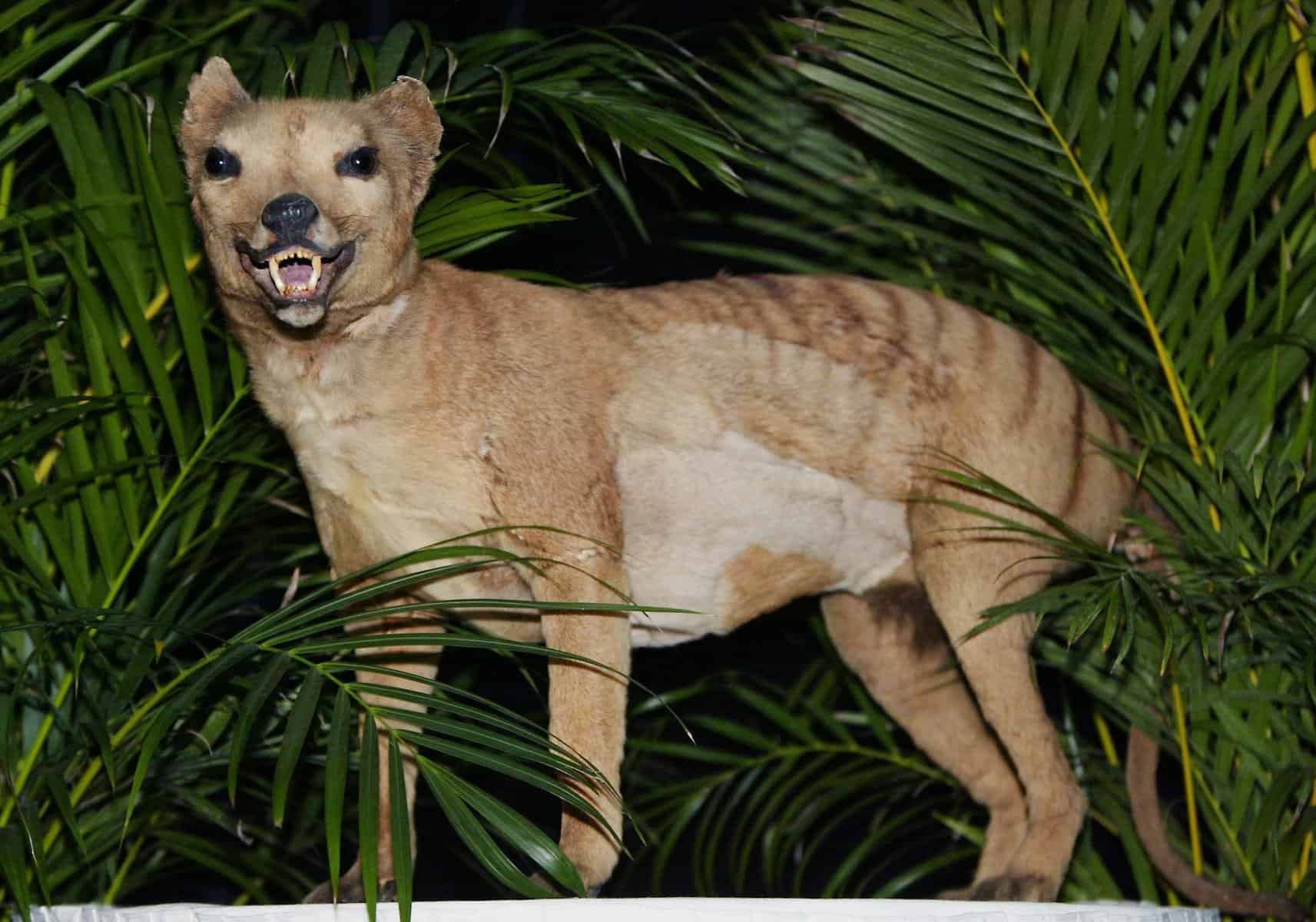Unveiling the Mystique of the Tasmanian Tiger: A Family Guide to Australia’s Elusive Creature
Hey there, curious families! Are you ready to embark on a fascinating journey through the Australian wilds to uncover the secrets of the elusive Tasmanian Tiger? As parents, sharing the wonders of nature’s history with your kids can be a rewarding adventure, and the tale of the Thylacine is one that combines natural history, mystery, and a touch of adventure – perfect for igniting young imaginations!
The Tale of the Thylacine
First off, let’s unravel the story of the Tasmanian Tiger. Also known as the Thylacine, it was neither a tiger nor a canine but a marsupial, unique to Tasmania, Australia, and New Guinea. Known scientifically as Thylacinus cynocephalus, this fascinating creature was the largest known carnivorous marsupial of modern times. Sadly, the species is thought to have become extinct in the 20th century, with the last known individual passing away in a Tasmanian zoo in 1936.
Physical Features and Behaviors
So, what did this animal look like, and why is it called a tiger? The Tasmanian Tiger had sandy, yellowish-brown fur, with distinct dark stripes across its back end, giving it a tiger-like appearance. It had a head resembling that of a dog, but with a pouch like that of a kangaroo! Their nocturnal and elusive nature added to their mystique. Kids, picture a creature that could hop around like a kangaroo but looked like it belonged in the canine family – quite the sight!
Why Is the Tasmanian Tiger So Fascinating?
The Tasmanian Tiger captures our imagination because it’s a part of Australia’s unique biodiversity that has vanished. It’s like a puzzle from history, waiting to be solved. The story of the thylacine encourages us to think about the environment, conservation, and what it means to preserve the species we share the planet with.
Lessons for Children
Discussing the Tasmanian Tiger with your children opens up a world of learning opportunities – from understanding extinction to the importance of environmental stewardship. It’s a great way to teach empathy for animals and respect for nature, all while learning about the unique ecosystems of Australia.
Where to Learn More?
Australia offers a variety of resources for you and your children to learn about the Tasmanian Tiger. Museums such as the Australian Museum in Sydney and the Tasmanian Museum and Art Gallery in Hobart have exhibits featuring the Thylacine. Many of these institutions also provide valuable online materials and interactive experiences that can be accessed from anywhere, ideal for an engaging at-home learning session.
Concluding Thoughts
Diving deep into the world of the Tasmanian Tiger with your family is not just an educational experience; it’s also a thrilling narrative that can inspire you and your children to explore and appreciate the wonders of wildlife, even those that are no longer with us. Embrace this journey of discovery and share a story that will stay with your family forever as you unravel the mysteries of Australia’s natural heritage.
Stay tuned as we dive deeper into the habitats, history, and cultural significance of the Tasmanian Tiger in the next section of our guide. Let’s keep the spirit of exploration alive for generations to come!

5 Essential Insights for Parents Preparing to Explore the Tasmanian Tiger’s Legacy
1. Know the Historical Significance
Understanding the Tasmanian Tiger’s historical context is essential. Explain to your kids how the Thylacine was an apex predator in Tasmania, which shaped the island’s ecosystem. Its extinction serves as a stark reminder of human impact on wildlife.
2. Emphasize Conservation Messages
The Tasmanian Tiger’s story is a powerful tool to discuss conservation. Highlight the role of habitat preservation, anti-poaching laws, and why protecting species while they’re still thriving is important. Using the Thylacine as an example, kids can learn that every species is a vital piece of the ecological puzzle.
3. Get Interactive with Educational Resources
Make use of the interactive resources available online and in museums. Engagement through games, 3D models, and virtual tours can make the learning process about the Thylacine memorable and fun for children.
4. Include Indigenous Perspectives
The Thylacine has cultural significance for Indigenous Australians. Share stories from Tasmanian Aboriginal communities that offer a different viewpoint about the creature’s role in their traditions and the ecosystem.
5. Prepare for a Road of Discovery
Prepare for a learning journey that doesn’t end with the Thylacine. This exploration can lead to broader discussions about other extinct species, Australia’s current wildlife, and what your family can do to contribute to conservation efforts. Let this be a springboard for future nature adventures and discoveries!
The Habitats and Hunt for the Tasmanian Tiger
Though the last confirmed sighting of a Thylacine dates back to the 1930s, their legend persists, with many reported sightings fueling the mystery. To explore their habitat, venture into the Tasmanian wilderness virtually or physically. Visit national parks and conservation areas that capture the essence of where the Thylacine once roamed.
The Cultural Significance of the Thylacine
The Thylacine holds an enigmatic place in Australian culture. As a symbol of what can be lost to time and negligence, it has inspired artworks, literature, and films. Museums often feature the Thylacine in exhibitions on Australian identity, reminding us of the delicate thread that connects us to our natural world.
Interactive Learning and Fun Activities
Get creative at home with Thylacine-inspired art projects, storytelling sessions, and science experiments that simulate the Thylacine’s environment. Encourage your kids to journal their thoughts and feelings about the animal, it’s a great way to engage their empathy and critical thinking.
Parting Wisdom for Eco-Warriors
As you share the story of the Tasmanian Tiger, instill a sense of responsibility and hope in your kids. While we can’t change the past, your family can help shape a future where the beauty of the wild and the wonder of creatures like the Thylacine are preserved and respected.
Embark on this educational quest as a family to explore the marvels and mysteries of Australia’s Thylacine. Immerse yourselves in this part of natural history, and let it enlighten and inspire your family’s passion for the wilderness and wildlife conservation.
Happy exploring, dear families! Let the spirit of the Tasmanian Tiger lead you to new adventures and shared learning. Together, we can keep the legacy of this remarkable creature alive for future generations to cherish.
For more great fun click here. For more information see here
Disclaimer
The articles available via our website provide general information only and we strongly urge readers to exercise caution and conduct their own thorough research and fact-checking. The information presented should not be taken as absolute truth, and, to the maximum extent permitted by law, we will not be held liable for any inaccuracies or errors in the content. It is essential for individuals to independently verify and validate the information before making any decisions or taking any actions based on the articles.




